This is a reproduction from “THE PRESS | Te Matatika” Article, June 2025 | Joanna Davis

‘Recycling’ a 120-year-old villa just the first step in building carbon-zero
Joanna Davis
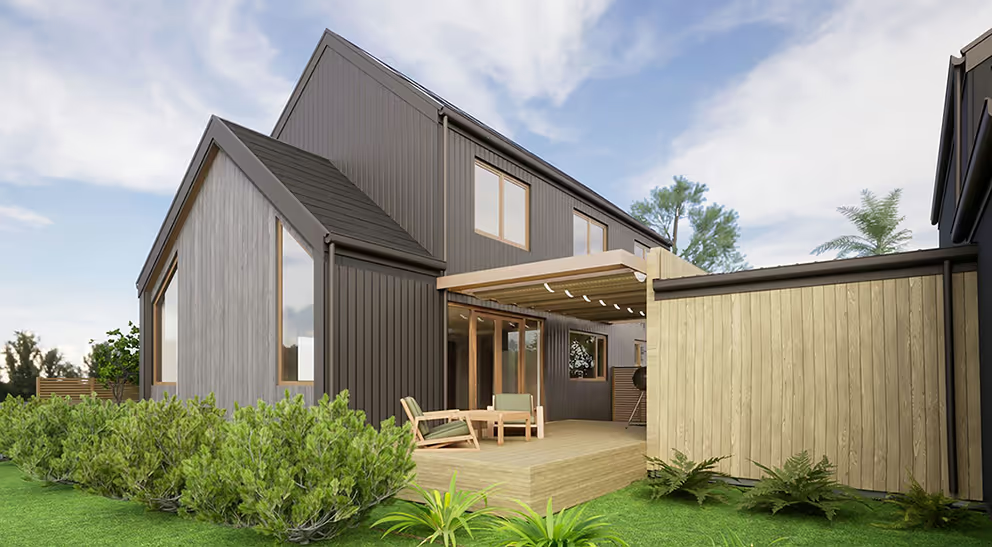
Bob Burnett Architecture is building four Superhomes on a quarter-acre (just over 1000sqm) site in Somerfield, Christchurch. (Image is an architectural render.)
Architectural designer Bob Burnett is taking super-energy efficient homes up another notch - this time by designing a carbon-zero home in Somerfield, Christchurch.
Burnett, who founded the Superhome Movement to promote healthy and energy efficient building in New Zealand, is building four homes - two standalone two-storey houses and two semi-detached homes - on a quarter-acre section.
The first step in keeping the project green was “recycling” the 1906 villa that was previously onsite. It was sold and has been moved to a “village of villas” in Ashley, North Canterbury.
“It’s great that it’s not getting smashed and sent to landfill, and is having another life,” Burnett says.
He says aiming for carbon zero was a steep learning curve.
Rather than just focusing on efficient operation of the homes once built, the team also needed to consider the materials used: Concrete and steel, in particular, are major contributors to greenhouse gas emissions, so use of those materials was minimised.
“The biggest thing is we reduced the concrete,” Burnett says. House A has a suspended timber floor on piles. The others have low-carbon concrete slabs to keep costs down.
The homes, which are still under construction, use a lot of timber (carbon-positive), including cladding and flooring, and structural steel has been replaced by New Zealand-made laminated glulam beams, which Burnett says offer better earthquake resilience as well as a lower carbon footprint.
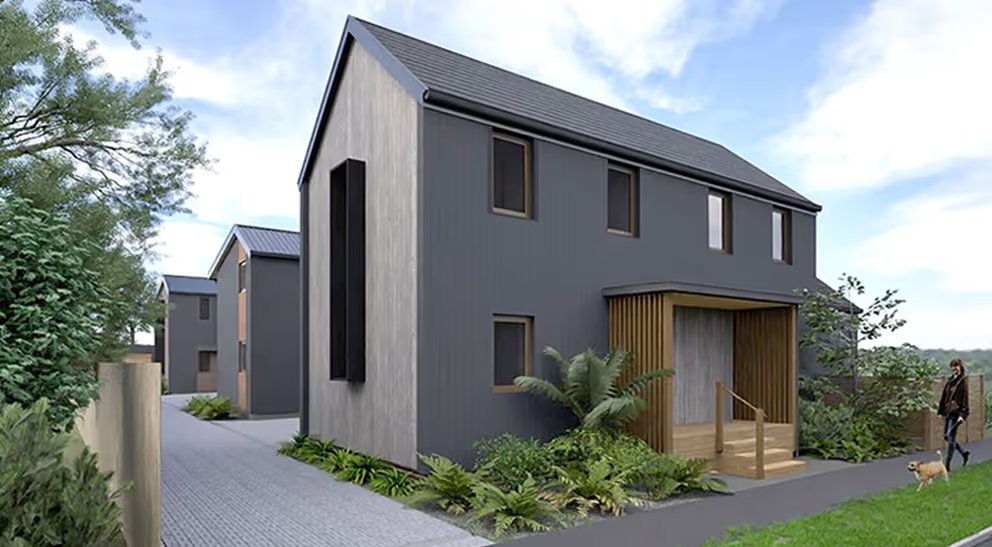
Two of the homes will be standalone and two will be semi-detached.
The carbon use has been calculated using VQuest software which works in with the architectural practice’s 3D CAD package.
Materials used need to have Environmental Product Declarations - less common in New Zealand-made products.
Another focus was to eliminate waste in the design and build processes; Construction waste is typically a huge contributor to landfill in New Zealand.
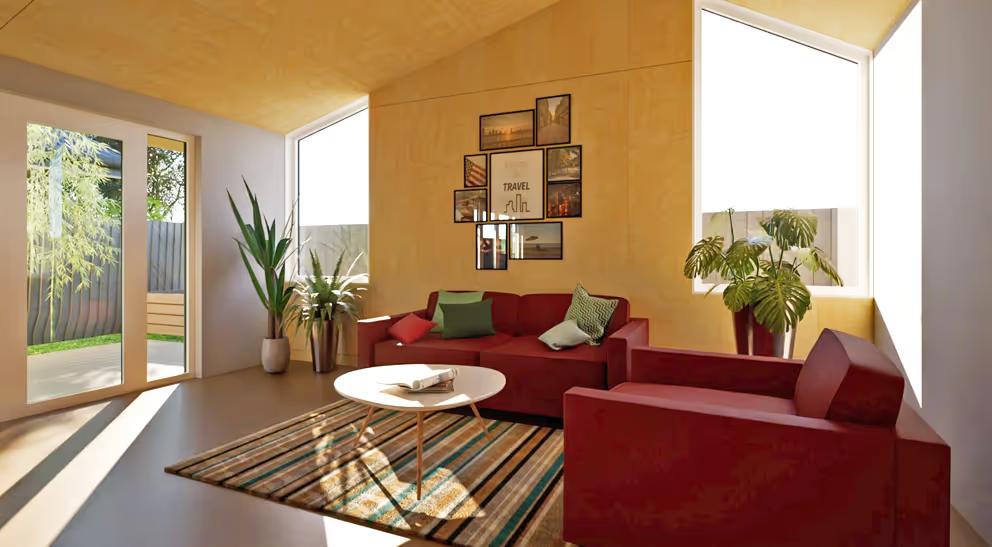
This architectural render gives an idea of the homes’ interiors: They are expected to be finished in December 2025 or January 2026.
Landscaping will include fruit trees, native plants, flowers, herbs and vegetables. Burnett says that was important, even though the landscaping is not considered in the carbon calculation.
“We take the holistic approach and think about the landscaping and biodiversity, even though it’s not a requirement,” Burnett says.
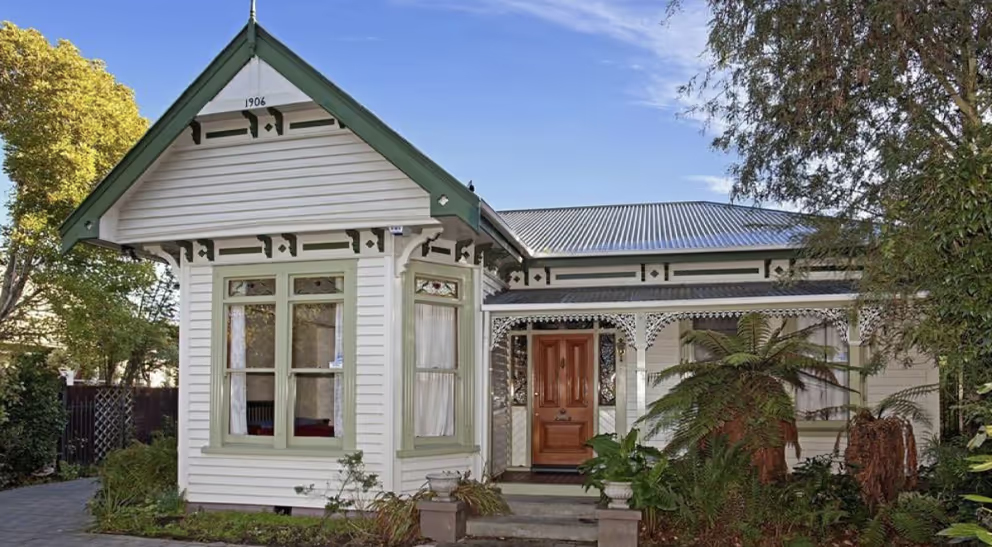
The 1906 villa that was once the only home on the site has been relocated to North Canterbury.
Planning rules would have allowed seven townhouses on the site, but would not have allowed for “the best possible living environment for people”.
“They are not designed exclusively for profit. They are designed for people and planet, probably in that order,” he says.
“We wanted gaps between each of the homes: The name [of the development], Ngā Whare Pārara, means to warm oneself or bask in the sun. We wanted sun into all the homes, a good quality of light, rather than row housing.
“These are designed for liveability rather than as a bunch of boxes, ‘how many can we fit on the site?’”
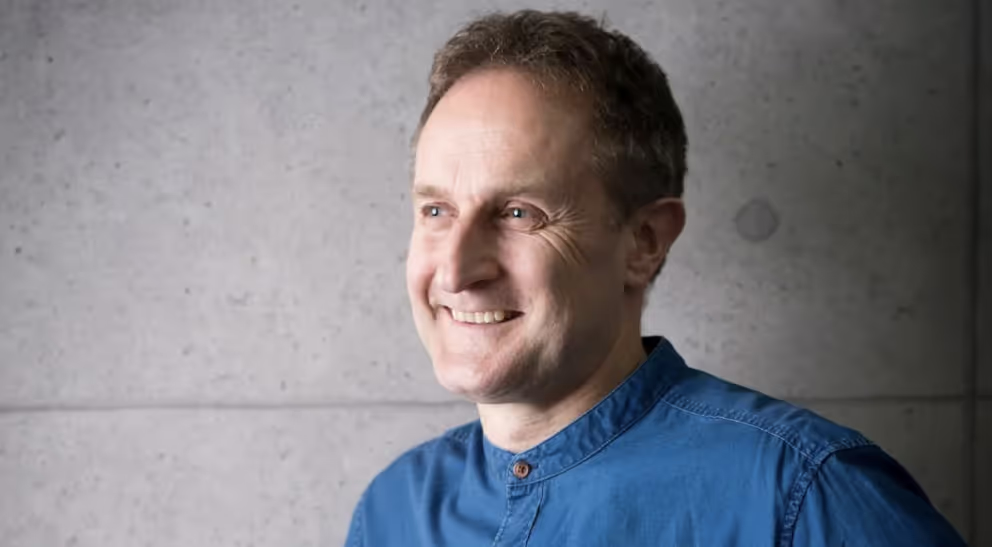
Architectural designer Bob Burnett is the founder of the Superhome Movement which aims to educate about high performing homesThe 1906 villa that was once the only home on the site has been relocated to North Canterbury.
Sustainable features include:
SUPERHOME FEATURES
Triple-glazed European windows
Whole home Heat Recovery Ventilation
EcoPanel - thermal bridge-free air sealed walls
Heat pump hot water systems
Automated shading to control indoor temperature
900mm eaves where needed to control solar gain
Solar panels, but without a battery
Wiring for EV charger
Rainwater collection
Layout optimised for natural light
Burnett says the windows had to be imported from Poland, as a similarly spec’ed product made in New Zealand was much more expensive. Ocean freight has a surprisingly low carbon footprint.
The EcoPanel walls are made offsite, and have a separate cavity for insulation and services, and an airtight wrap on both sides, which stops condensation and moisture.
One of the homes is under offer, and one will be kept as a show home to educate others - both the public and professionals - as to how this way of building works. “We can’t design and build all the homes that are needed ourselves, so we give the knowledge away,” Burnett says.
“People can imagine an energy efficient sustainable home, but actually experiencing it is different. If you actually visit the home, you can feel how warm it is, experience the air quality, see the layout...
“People who are chasing high performance homes are often focused on the technical engineering side of it rather than the design, [but] there’s no reason you can’t have both.”
The two available townhouses are on the market for $1.25 million (three bedrooms, semi-detached, 135m², single garage) and $1.55 million (four bedrooms, standalone, 185m² with a double garage).
